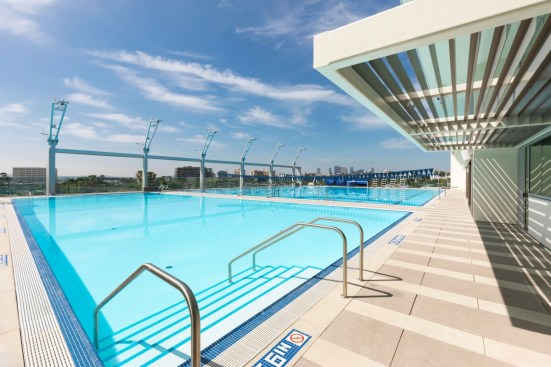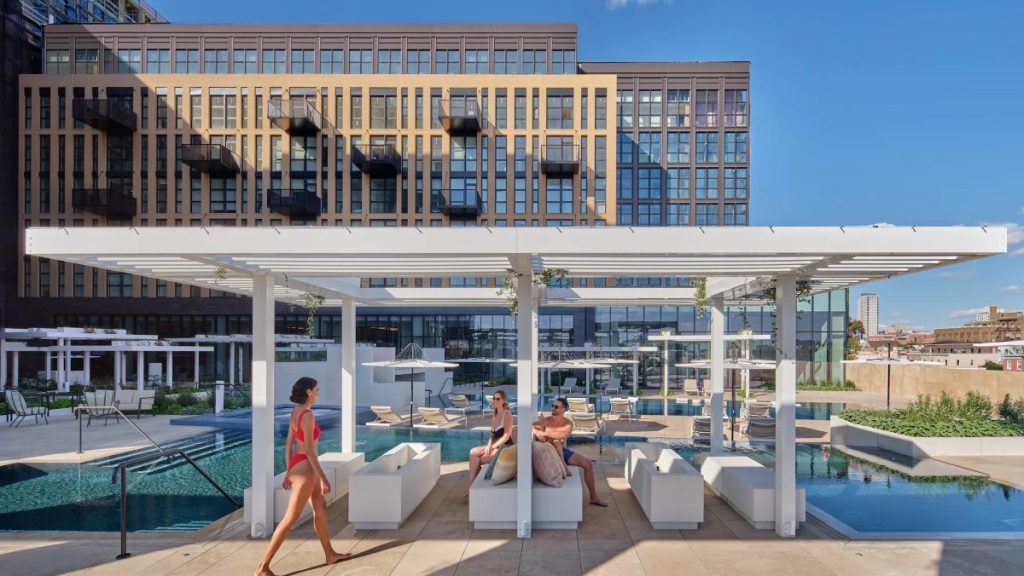Space may be shrinking, but consumer expectations continue to rise. For this reason, it’s imperative to stretch every square foot for all it’s worth.
This applies to both residential and commercial pools and spas. So it only stands to reason that podium pools are becoming more popular than ever. These installations are constructed within a building envelope on anything other than ground level, supported by the building rather than earth. Rooftop pools fall under this category, but not every podium pool is a rooftop pool. In this application, they make the most of the rooftop space, and provide an outdoor pool without having to place it outside the building footprint. And they offer gorgeous views to boot.
However, podium pools also carry significant risk if the structure should leak. And any needed repairs would be exponentially more expensive, due to access issues. Consider the following when undertaking this kind of installation.
1. Expect beefed-up construction.
Structural integrity is a top concern with any pool, but here it is especially critical. Podium pools will require beefed-up construction and support measures, including stronger concrete, heavier-than-normal reinforcement for concrete shells, or perhaps the use of stainless steel pools to lighten the load.
Separate support structures will have to be constructed into the building, as well as a vault to hold the pool shell, in many cases. When working on these pools, make sure the building architects and engineers allow enough room to accommodate the vault plus the shell (including the depth), not to mention the surrounding plumbing and equipment that can cause more sprawl than expected.

Extra measures will likely be required to help the structure and surrounding plumbing move with the building. In the case of vault pools, for instance, engineers often specify a separation layer between the pool and vault to protect the shell from building movement and to stop cracks from spreading from the vault to the pool shell.
2. Live and die by waterproofing and drainage.
This is arguably the most critical part of a podium pool installation, as it’s necessary to fend off the type of catastrophic damage that can occur from severe leaks.
These pools generally require a combination of methods for blocking, trapping and directing water, potentially including admixtures in the shotcrete, some type of membrane, sealants in and around penetrations, or waterproofing agents. Always make sure any waterproofing products are appropriate for the application and compatible with any others that make up the combination.
Drainage also will be required to send water from inevitable leaks and condensation away from the area.
3. Map everything out in advance.
Precision is paramount on these projects, so every item, down to the fitting, should be planned before construction.
Draw out plumbing schemes, including penetrations, as well as struts, clamps or other methods for supporting the pipe and protecting it against vibration and wear.
Also note all the peripheral parts of the building, such as air-conditioning ducts, gas lines, and conduit. With access at a premium, the trades will have to be carefully scheduled.

